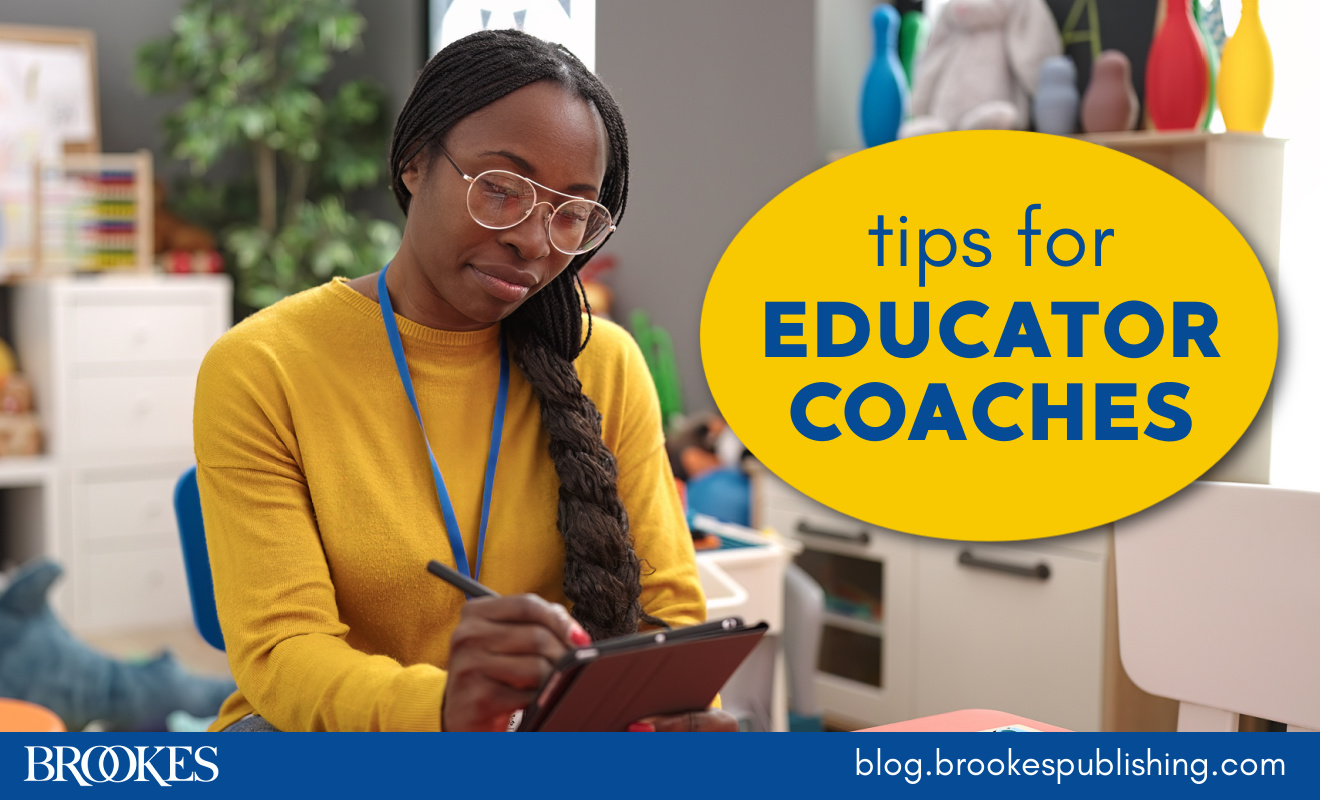7 Ways Educator Coaches Can Build Strong Alliances with Coachees
November 7, 2023
 Coaching between allied educators—across Grades PreK-12—is a highly effective professional learning strategy and a great way to strengthen outcomes for all students. In an earlier blog post, we outlined four essential steps to implementing a coaching framework (excerpted and adapted from the book Coaching for Systems and Teacher Change by Jennifer D. Pierce & Kimberly St. Martin). Today we’re focusing on the first step of that framework, alliance-building, and some strategies that Pierce & St. Martin recommend coaches use to show strong interpersonal skills, take a collaborative coaching stance, and demonstrate expertise.
Coaching between allied educators—across Grades PreK-12—is a highly effective professional learning strategy and a great way to strengthen outcomes for all students. In an earlier blog post, we outlined four essential steps to implementing a coaching framework (excerpted and adapted from the book Coaching for Systems and Teacher Change by Jennifer D. Pierce & Kimberly St. Martin). Today we’re focusing on the first step of that framework, alliance-building, and some strategies that Pierce & St. Martin recommend coaches use to show strong interpersonal skills, take a collaborative coaching stance, and demonstrate expertise.
Use the steps in this post to enhance your coaching practice, whether you’re working with individual teachers or educator teams.
Apply effective communication strategies
Use these strategies during every phase of the coaching cycle to set a positive tone:
- Listen more than you speak to deepen your understanding of the teacher’s or team’s work and convey that their ideas and insights are valued.
- Ask clarifying and/or open-ended questions to confirm you understand the teacher or team, deepen their thinking, encourage self-reflection, and narrow the focus of the coaching session on the coaching goals.
- Summarize key ideas stated by teachers or teams. Summarizing shows you understand the coachee. It can also help focus/refocus the conversation when teachers or teams share overly broad ideas that may not connect to the coaching goals.
- Employ open body language to convey a climate of safety and show you are mentally present in the current interaction. Face the coachee, avoid crossing arms, put away your phone, and be mindful of facial expressions.
- Nod your head and occasionally verbally confirm (e.g., “Uh-huh,” “Yes”) to show you are actively listening and receptive to the ideas of the coachee(s).
Build trust
Trust building should occur throughout each phase of the coaching cycle. In addition to using the communication strategies above, two of the most effective things you can do to build trust are (Kemp 2011):
- Fulfilling commitments. Align your words and actions: If you say you will do something, then do it. The bottom line here is that coachees need to know that you are reliable.
- Showing empathy. Use nonjudgmental language, even when teachers or teams hold different views than you.
Set goals with coachees based on needs
Goal setting typically occurs during the premeeting phase of the coaching cycle. Keep in mind these important tips when setting goals with coaches:
- While alliance is just beginning to be established, avoid telling the teacher or team what the goal should be without gathering more information from the coachee(s). Instead, ask teachers or teams what they want to accomplish from coaching and then come to agreement about that goal.
- If teachers or teams request that you set their goal, ask them to talk about what is working well and what has been difficult with teaching or systems change. After you gather more information from them, offer a few suggestions for goals that connect to areas of difficulty.
- Help the teacher or team set a realistic goal. Coachee(s) benefit from setting a goal that allows them to achieve a “quick win,” particularly during initial coaching sessions when coachees may not understand the value of coaching.
- If the teacher or team wants to set a goal that is difficult to achieve, help the coachee set smaller goals that lead up to the more complicated change. This step-by-step approach to goal setting also creates a continuity to the coaching work—initial sessions clearly connect to what will occur in later sessions.
Create equitable partnerships
A coach–coachee partnership that is based on equity clearly conveys that the coach and teacher or team are on equal footing, equally valued for their insights and expertise, and will mutually benefit from the partnership. Use these strategies throughout each phase of the coaching cycle:
- Share your professional struggles and mistakes. Talking about your own teaching or team challenges shows coachees that everyone engages in continuous improvement.
- When teachers or teams are struggling, focus on the positive while honoring difficulties. For example, remind them of specific ways in which they have grown or experienced success. Find ways to say, “We’re in this together!” or “Look at how much we’ve already accomplished!”
Set parameters for partnership
Agree how the coach and coachees will work together. For example, the coach and coachee should mutually agree on:
- What will transpire in coaching sessions (e.g., what the coachee will do and what the coach will do)
- How often and when the partners will work together
- What will be kept confidential between the coach and coachee and what can be shared with others outside the partnership, particularly with leaders responsible for evaluation
Creating a written coaching agreement can help a coach and coachee set these terms (a sample coaching compact is available in Coaching for Systems and Teacher Change).
Establish content area capacity
Convey to teachers and teams that you know what you’re talking about and have deep content knowledge in the area in which you coach. Respond succinctly and clearly to their questions, share information and resources that are relevant but easy to understand, and help the teacher or team gain access to critical information they would not otherwise have at their disposal. These strategies can be used at any phase of the coaching cycle.
Convey capacity in coaching
Conveying competence in conducting coaching sessions is a final alliance strategy. This means there is an established consistency and pattern to your coaching sessions that makes sense to coachees. Your pattern should be to conduct three-phase recursive coaching cycles. Take time to plan and reflect on your work with teachers and teams so that you can conduct these three phases with ease and competence. (Coaching for Systems and Teacher Change offers guidance on these coaching cycles, plus a great tool for planning, conducting, and reflecting on coaching sessions.)
Alliance-building with coachees is a critical foundational step for building an effective and productive coaching relationship. Use the steps in today’s post to strengthen your alliances—and for a real-world guide to putting each step of the coaching framework into action, get the book behind today’s blog post!
Coaching for Systems and Teacher Change
By Jennifer D. Pierce, Ph.D., & Kimberly St. Martin, Ph.D.
Discover what effective coaching looks like across the PreK-12 grade span and how to conduct powerful coaching cycles with teachers and teams. You’ll get foundational information on coaching goals, activities, and challenges; strategies and resources to help you implement an effective coaching framework; vivid examples of what successful coaching looks like at different grade levels; and 30 downloadable tools to help coaches take action and continuously improve.
Reference
Kemp, T. (2011). Building the coaching alliance: Illuminating the phenomenon of relationship in coaching
(pp. 149–176). In G. Hernez-Broome, L. A., Boyce, & I. Kraut (Eds.), Advancing Executive Coaching. Wiley.




Write a Comment
Your email address will not be published. Required fields are marked *
Post a Comment